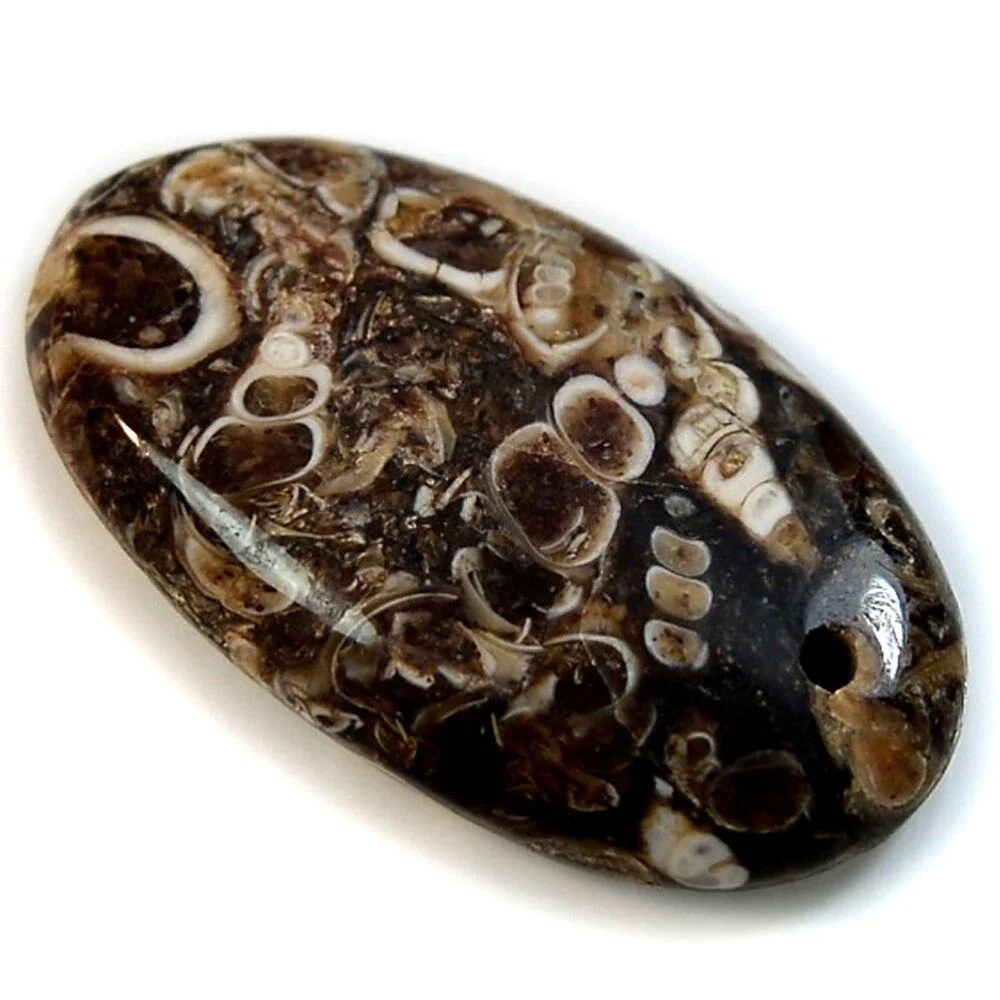Earth Treasures: Turritella Agate

By Chisom Ibemere
Turritella or Elimia Agate is a fossiliferous agate that contains fossilised remains of marine gastropods of the Turritella genus. Its name is derived from the word, “tower,” a Latin word describing the spiral shape of the fossilised snail shells.
It is very easy to recognize due to its large fossil snails content that stand out in a white-to-tan color that contrasts with the brownish agate.
Turritella Agate occurs in sedimentary rock in regions where ancient marine deposits are present.
Significant deposits of Turritella Agate can be found in the United States (Wyoming, Texas), Mexico, Madagascar, and India.
Turritella Agate is popular in jewelry making. It can be cut into cabochon for pendants, rings, and bracelets.
It is also used in decorative objects such as bookends, paperweights, and figurines, showcasing its natural beauty and fossilized inclusions.
Turritella Agate typically exhibits earthy hues which may ranging from brown to gray, with distinctive spiral-shaped fossil inclusions of Turritella snails and has a unique pattern.
It’s hardness is between 6.5-7 on the Mohs scale, making it durable and suitable for use in jewelry. It is opaque but may display some translucency depending on the specific specimen.
Turritella Agate holds both aesthetic and scientific value. Its beauty and uniqueness make it a sought-after material for jewelry and decorative purposes, appealing to collectors and enthusiasts alike.
Turritella Agate provides valuable insights into ancient marine ecosystems and geological processes through the preservation of fossilized gastropod shells within its structure. It’s aesthetic appeal and scientific significance contributes to the global value as a distinctive and prized gemstone.
